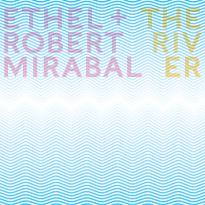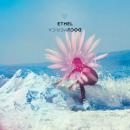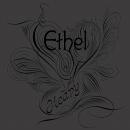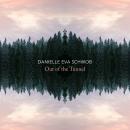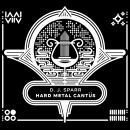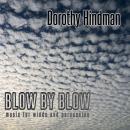The River
The River
Taos, NM
| The RiveriTunes Artist's PageiTunes Album Page | |||
|---|---|---|---|
| Song Title | Time | Price | |
| 1. | An Kha Na | 05:13 | $0.99 |
| 2. | Tuvan Ride | 04:25 | $0.99 |
| 3. | Skywatchers | 03:54 | $0.99 |
| 4. | Chant | 06:18 | $0.99 |
| 5. | Peace Calls | 05:39 | $0.99 |
| 6. | Clean Dirge, Dirty Dirge | 02:38 | $0.99 |
| 7. | Run for Rain | 03:41 | $0.99 |
| 8. | Rana Run | 03:21 | $0.99 |
| 9. | Tsintskaro Memory | 03:17 | $0.99 |
| 10. | In the Eyes of E | 04:09 | $0.99 |
| 11. | Jay-Red | 04:46 | $0.99 |
| 12. | Marshmallow Experiment Fails | 00:24 | $0.99 |
| 13. | Wi-Wa | 02:07 | $0.99 |
| 14. | Tsoma | 03:25 | $0.99 |
| 15. | Gat'té | 06:57 | $0.99 |
The River continues ETHEL’s deeply successful nine-year collaboration with Native American musician, instrument builder and three-time GRAMMY® Award-winner Robert Mirabal. The live performance immerses the audience in a flow of music, narrative, and ritual, created by ETHEL and Mirabal exclusively for this program, evoking timeless Native American traditions through contemporary artistry. As delivered by these master performers, the effect is breathtaking, even ecstatic.
From “An Kha Na" to “PeaceCalls,” through rushing rapids and still, sacred spaces, ETHEL and Robert Mirabal evoke the magic and majesty of “the river” which connects us all. In retreat together at Mirabal’s home on the Taos Pueblo, each of the artists brought original musical or poetic works with special significance to the group: Mirabal’s own “An Kha Na,”his tribal “Wi-Wa,” Kip Jones’s “Tuvan Ride,” “Jay-Red” and “Tsoma,”Dorothy Lawson’s “Gat’te,” Ralph Farris’s “Rana-Run”and “Waterfall.” As the Pueblo River rushed past the door, storms came and went and coyotes howled in the night, the pieces grew in scope and depth, each player contributing layers and insights. Influences were drawn in from Hawaii, Arizona, Mexico, Ecuador, Morocco, Nigeria, India, Mongolia, Tibet, Japan and Soviet Georgia. In sum, the sound is dazzling, and the spirit full of generosity, love and gratitude. Every audience will find their hearts healed and their hope raised.
About ETHEL
Established in New York City in 1998, ETHEL quickly earned a reputation as one of America’s most adventurous string quartets—heirs to the likes of the Kronos Quartet and Soldier String Quartet, and part of a generation of young artists blending uptown, conservatory musicianship with downtown genre-crossing—by playing with the intensity and accoutrements of a rock band. The New York Times has described them as “indefatigable and eclectic,” and The New Yorker has deemed them“vital and brilliant.” Nearly two decades into their singular career, ETHEL has in turn become seminal in its own right, a path-breaker for countless younger genre-spanning ensembles, and a prolific commissioner of new music.
At the heart of ETHEL is a collaborative ethos—a quest for a common creative expression that is forged in the celebration of community. In addition to premiering 21st century works by a broad range of groundbreaking composers, the quartet creates and tours rich, often multimedia, productions in which community engagement is a key element. ETHEL is currently touring the evening-length ETHEL’s Documerica, inspired by the tens of thousands of images shot as part of the Environmental Protection Agency’s decade-long Project Documerica. Launched in 1971, the initiative commissioned photographers across America to document the state of the environment and its impact on society. Directed by OBIE Award-winner Steve Cosson, with projection design by Deborah Johnson, ETHEL’s Documerica features new work by ETHEL members and music the quartet commissioned from other uniquely American artists. The quartet released a Documerica album in 2015. Other current evening-length programs include The River, a collaboration with Taos Pueblo flutist Robert Mirabal (album to be released June 2016), the introspective Grace, featuring ETHEL's arrangements of music by Ennio Morricone and Jeff Buckley; and Blue Dress, which pays special homage to women making their musical mark on the 21st century.
ETHEL has collaborated with artists including David Byrne, Bang on a Can All Stars, Kaki King, Todd Rundgren, Carlo Mombelli, Ursula Oppens, Juana Molina, Tom Verlaine, STEW, Ensemble Modern, Jill Sobule, Dean Osborne, Robert Mirabal, Howard Levy, Simone Sou, Andrew Bird, Iva Bittová, Colin Currie, Thomas Dolby, Jeff Peterson, Oleg Fateev, Stephen Gosling, Jake Shimabukuro, Polygraph Lounge and Vijay Iyer.
The quartet regularly performs works by all of the members of the ensemble, alongside music by Philip Glass, Julia Wolfe, Phil Kline, David Lang, Dan Friel, Mary Ellen Childs, John King, Raz Mesinai, John Zorn, Missy Mazzoli, Anna Clyne, Steve Reich, Kenji Bunch, Don Byron, Aleksandra Vrebalov, Marcelo Zarvos, Pamela Z, Evan Ziporyn and Terry Riley. Over the past five years, ETHEL has premiered 150+ new works, many of them commissioned by the quartet.
ETHEL is the Resident Ensemble at The Metropolitan Museum of Art’s Balcony Bar and Ensemble-in-Residence at Denison University.
ETHEL is Ralph Farris (viola), Kip Jones (violin), Dorothy Lawson (cello) and Corin Lee (violin).
About Robert Mirabal
Musician, writer, singer and storyteller, Robert Mirabal is Native America's most dynamic and best-selling artist. In addition to the music and instruments he creates, he is also a celebrated painter, poet and playwright. He is the author of A Skeleton of a Bridge, a book of poetry, prose and short stories. Mr. Mirabal is the recipient of a National Endowment for the Arts Award, three GRAMMY® awards and the New York Dance and Performer's "Bessie" Award for composition.
“The River resides somewhere beyond the intersection of ceremony and show biz, at a place where multicultural collaboration becomes sacred art.” - Seattle Times
“For nearly 18 years…ETHEL has been exploding the boundaries of conventional quartet music by combining its classical training with rock ’n’ roll enthusiasm and musical traditions from around the world.” - New Orleans Advocate
